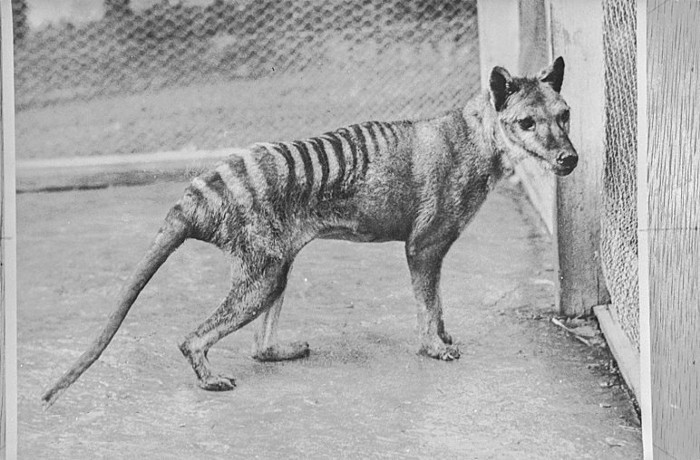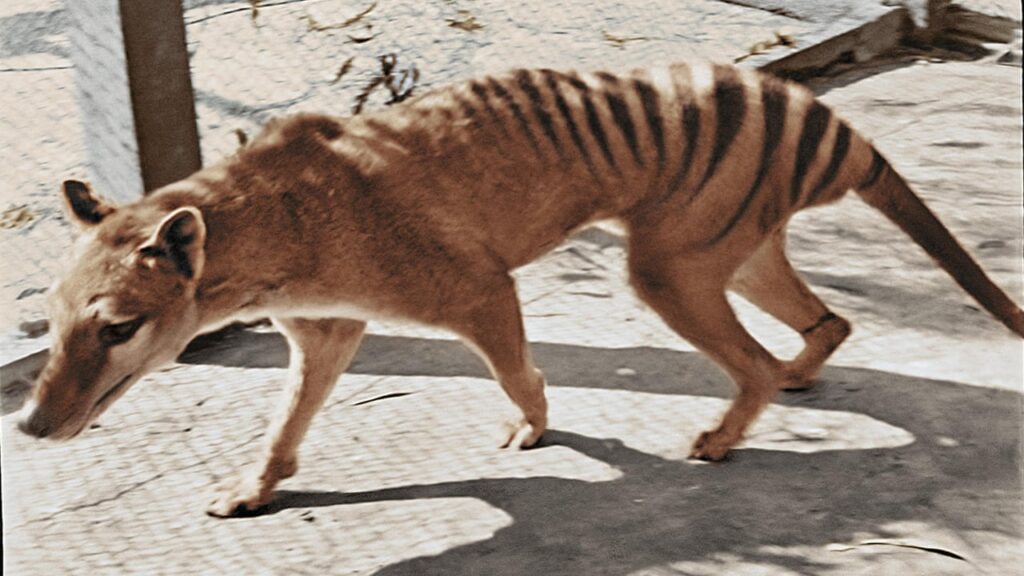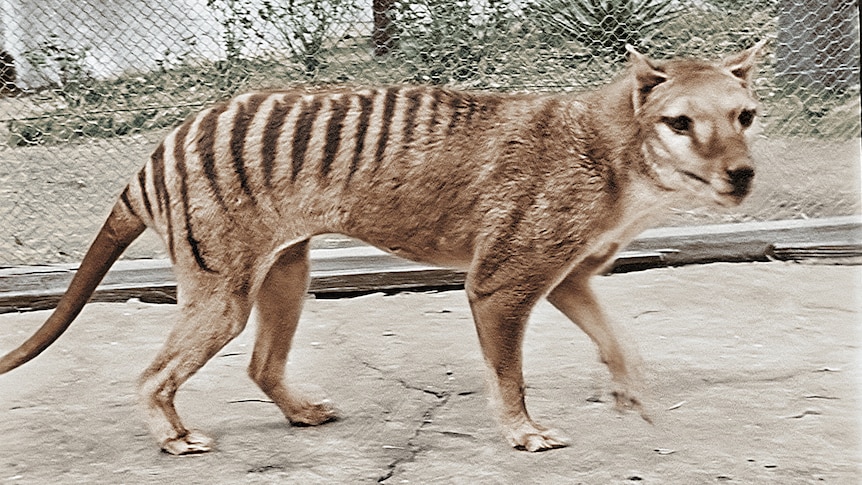The Thylacine (Thylacinus cynocephalus) commonly known as the Tasmanian tiger is an extinct carnivorous marsupial that was native to the Australian mainland and the islands of Tasmania and New Guinea. It is also referred to as the Tasmanian wolf and as the Nannup tiger on the Australian mainland. The last known live animal was captured in 1930 in Tasmania.

It is known as the Tasmanian tiger because of its striped lower back similar to that of the tiger. The Tasmanian tiger was carnivorous and nocturnal, the largest known carnivorous marsupial in the world before its extinction. It had an abdominal pouch similar to that of a kangaroo in fact both the male and the female had the abdominal pouch.
Much like its name it was not as big as the tiger, it resembles a dog or fox in size. The mature Tasmanian tiger ranged from 39 to 51 in long, with a tail of around 20 to 26 inches. Stood 24 in at the shoulder height and on average weighed 12 to 22 kg though they could range from 8 to 30 kg.

We have seen numerous extinct animals in the museum basically their bones and remains but it’s a mind-blowing experience to see the actual image or video of an extinct animal. In the case of the Tasmanian tiger, we can. The NFSA has released colorized footage of the last known surviving Tasmanian tiger for National Threatened Species Day.

Naturalist David Fleay shot the original footage in black-and-white at Beaumaris Zoo, Hobart in December 1933. Shot in 1933, the film shows a tiger named Benjamin, the last thylacine in captivity in the world.
Australian naturalist David Fleay originally captured the footage on a 35-millimetre film in December 1933. The film and negative are in the NFSA’s collection, and the negative was recently scanned in high resolution and then colourized by film producer Samuel François-Steininger at Composite Films in Paris.

The NFSA scanned the original film negative using a Scanity HDR film scanner and sent Ultra High Definition ProRes files to Samuel in Paris. Extensive research has been done before embarking on the colorization process on how the animal may have been looked like once in color. At just under 80 seconds, Fleay’s footage is the longest single film of the 10 separate thylacine films known to exist.


